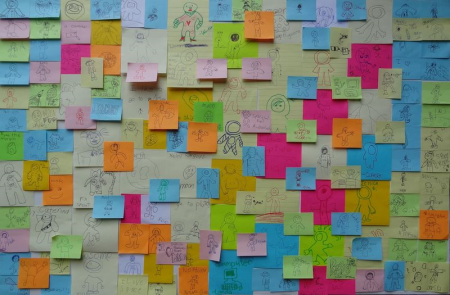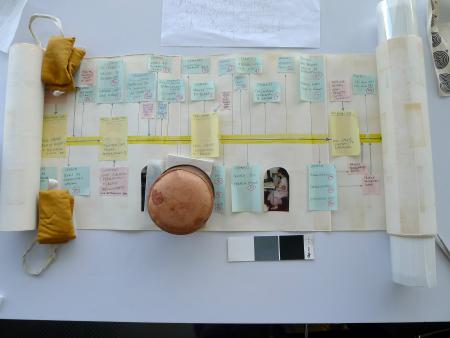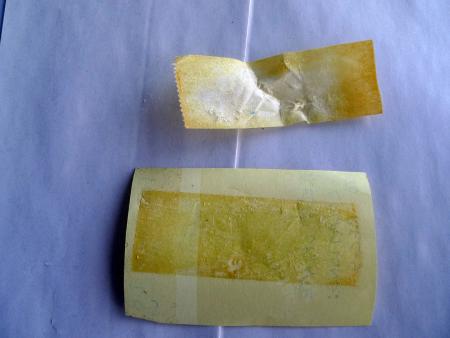Even in the conservation lab of the Smithsonian Institution Archives, land of acid-free bookmarks and conservation-grade adhesives, I recently found myself looking high and low for a practical Post-it note. It was the perfect way to temporarily label a jar of adhesive for one day's use, instead of cutting out a small piece of paper and taping it to the jar. So much extra work! Created around 1960 by Art Fry and Silver Spencer (legend has it that they were trying to create a strong, durable adhesive but kept making this weak low-tack adhesive by accident), the humble Post-it note is now a fixture of office culture. So simple and easy to use, what is there not to love about them?!

Well…unfortunately, this bright and useful invention has a darker side for librarians and archivists around the world. Not too long ago, conservation scientists at the National Archives and Records Administration conducted a battery of tests on Post-it notes and their competitors (hereafter referred to as a sticky note), and concluded that all sticky notes leave behind a harmful residual adhesive that attracts dirt and sticks to other papers or objects, no matter if you remove it immediately or leave it on for years, and the dyes in some sticky notes will run if wet. Additionally, removing a sticky note from a fragile book can easily lift ink and tear pages, and the notes are often made of poor quality, acidic paper which will cause damage over time. Although the original Post-it note developed for the 3M Company uses an acrylic adhesive which will not stain paper, other sticky notes are often made with a butyrate adhesive that will discolor paper over time, so users beware! Consequently, most libraries and archives enforce a strict “NO POST-IT NOTES” rule.

So, if you will, imagine my joy tinged with horror when an unusual document, bearing some seventeen feet worth of sticky notes neatly tacked onto a seemingly endless scroll, came into the lab to be conserved!
Cordelia Rose, former registrar of the Cooper-Hewitt Museum, created this lengthy blue, pink, green and yellow flow chart to describe how the registrar process worked in 1986-1987 and to explain the database system they were using at the time. But as you can see, the sticky notes had become most ill-fated! Having already come loose and been readhered with a deteriorating double-sided tape, they were stained, attracting dirt, curling at the edges and beginning to fall off, leaving a disordered sticky mess.


After discussion with my colleagues, it was decided to readhere the notes in-situ, making it safe for digitization and for researchers to use. To do so, each note was carefully detached with a heated scalpel, while any residual adhesive was removed with a crepe eraser and methyl cellulose crumbs. Once the surface areas were clean, the sticky notes were carefully reattached in the same position with small drops of Lascaux 360HV, a permanent yet reversible adhesive. The Lascaux 360HV remains slightly tacky at room temperature, which allows the sticky notes to remain slightly flexible as the scroll is rolled and unrolled. Finally, a custom scroll box was made following instructions from our good friends at the Freer-Sackler, who handle scrolls far more often than we do at the Archives.

Stay tuned for a follow-up post by my colleague, archivist Jennifer Wright, who will explain why we are preserving and archiving the sticky note thoughts of Cordelia Rose! [UPDATE: linked below]
Related Resources
- "Scrolling" through Museum History, Jennifer Wright, The Bigger Picture
- Suited for Space exhibition, guest notes on what they would bring to space sketched on sticky notes, Smithsonian Traveling Exhibition Service
- Art Fry: Post-it Note Inventor, podcast, Lemelson Center
Related Collections
- Record Unit 540: Cooper-Hewitt Museum, Office of the Registrar, Subject Files, circa 1937-1992, Smithsonian Institution Archives
Produced by the Smithsonian Institution Archives. For copyright questions, please see the Terms of Use.

Leave a Comment